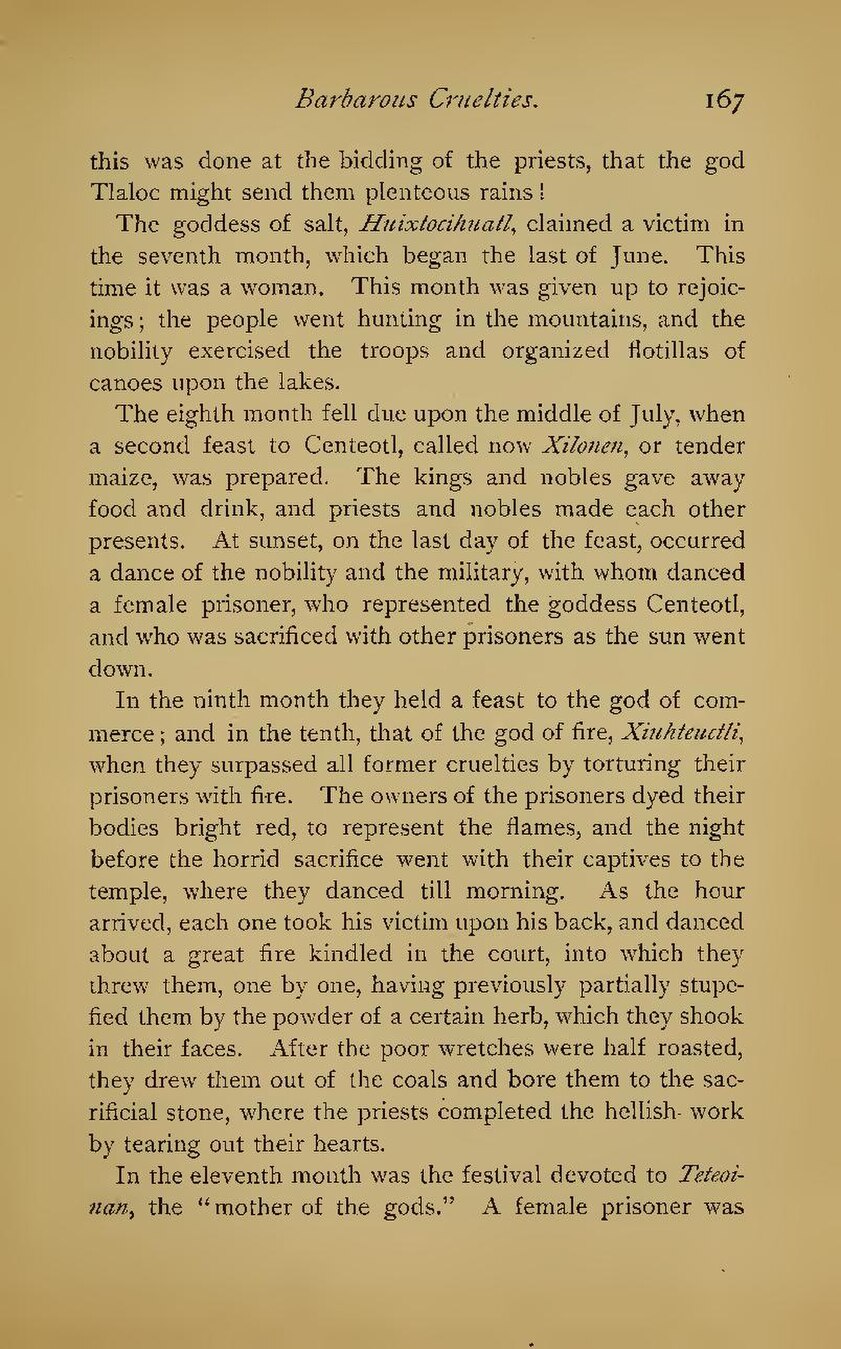this was done at the bidding of the priests, that the god Tlaloc might send them plenteous rains!
The goddess of salt, Huixtocihuatl, claimed a victim in the seventh month, which began the last of June. This time it was a woman. This month was given up to rejoicings; the people went hunting in the mountains, and the nobility exercised the troops and organized flotillas of canoes upon the lakes.
The eighth month fell due upon the middle of July, when a second feast to Centeotl, called now Xilonen, or tender maize, was prepared. The kings and nobles gave away food and drink, and priests and nobles made each other presents. At sunset, on the last day of the feast, occurred a dance of the nobility and the military, with whom danced a female prisoner, who represented the goddess Centeotl, and who was sacrificed with other prisoners as the sun went down.
In the ninth month they held a feast to the god of commerce; and in the tenth, that of the god of fire, Xiuhteuctli, when they surpassed all former cruelties by torturing their prisoners with fire. The owners of the prisoners dyed their bodies bright red, to represent the flames, and the night before the horrid sacrifice went with their captives to the temple, where they danced till morning. As the hour arrived, each one took his victim upon his back, and danced about a great fire kindled in the court, into which they threw them, one by one, having previously partially stupefied them by the powder of a certain herb, which they shook in their faces. After the poor wretches were half roasted, they drew them out of the coals and bore them to the sacrificial stone, where the priests completed the hellish work by tearing out their hearts.
In the eleventh month was the festival devoted to Teteoinan, the "mother of the gods." A female prisoner was
